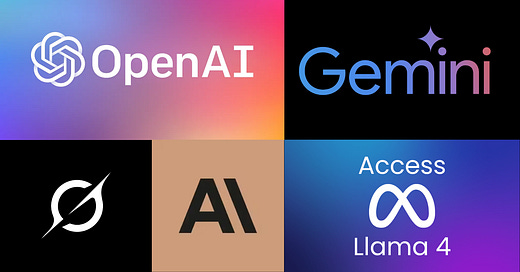Portable Prompt Engineering Best Practices
Or Prompting Across LLMs for the AI Model-Agnostic Among You
I don’t care how good your prompts are—if they only work with one AI model, they’re not good enough.
Harsh? Maybe. True? Absolutely.
I’ve spent the last couple of years pushing AI to its limits.
From generating newsletters to navigating tense community communication as a public affairs officer, I’ve had my share of wins and head-scratchers.
And if there’s one lesson I’ve learned, it’s this: tying yourself to a single LLM is like buying a brand-new phone and only using it to make calls.
Most prompting guides play favorites.
They’ll show you how to get better output from ChatGPT, Claude, Gemini, or whatever happens to be trending. But the tech doesn’t stand still—and neither should you.
That’s where model-agnostic prompting comes in.
Writing Instructions Across Any Language Model
Model-agnostic prompting means writing instructions that work across any language model.
You're not married to a provider. You're not hoping a price hike doesn't crush your budget. You're not rebuilding workflows every time a new model drops.
You're future-proofing. You're flexible. You're resilient.
Why It Matters More Than You Think
AI moves fast. Tying your workflow to a single model is like building on sand. Here's what model-agnostic prompting helps you avoid:
Vendor lock-in. Switch models without headaches.
Wasted money. Use lightweight models for simple tasks, and save premium ones for heavy lifting.
Feature FOMO. Try new tools without rewriting everything.
Workflow breakdowns. Maintain continuity when platforms shift.
That flexibility lets you pick the best tool for the job, not the one you’re stuck with.
The Core Principles That Always Work
These are your fundamentals:
Clarity. Say what you mean. Skip the fluff.
Specificity. Define the format, tone, context, length—everything.
Context. Don’t assume the model knows what you’re talking about.
Structure. Give examples and format guidance.
Iteration. Great prompts are built, not born.
Going Beyond Basics: Advanced Prompting Techniques
Once you’ve nailed the fundamentals, it’s time to level up:
Prompt chaining. Break down complex tasks into steps.
Role prompting. Tell the model who it's acting as. ("You're a trial lawyer summarizing a deposition...")
System prompts. Set the tone and logic rules before the task even starts.
Testing, Failing, Tweaking
Bad prompts teach you more than good ones. Try variations. Run A/B tests across models. Evaluate what works and what doesn't. Keep a swipe file of prompts that perform well.
Know the Limits
All LLMs have failure modes. Some hallucinate more. Some guess too confidently. Some get confused without tight guardrails. Build your prompts with these in mind:
Reconfirm instructions mid-task
Use simple language
Watch for bias
Industry-Specific Tactics
A generic prompt won't cut it in regulated industries. Healthcare? Legal? Finance? You’ll need:
Clear disclaimers
Structured outputs
Ethical framing
How to Make Prompts Portable
Keep a shared prompt library. Use variables and modular design. Build prompts like Lego blocks so you can plug-and-play across models or workflows.
Team Use and Integration
If your team uses LLMs:
Standardize templates
Create onboarding docs for new tools
Assign a point person to update prompt libraries monthly
Real Examples (and a Few Templates)
Instead of: "Write a summary of this article." Try: "Summarize this 1,200-word article in 5 bullet points with plain language for a 9th-grade reading level."
Instead of: "What are the pros and cons?" Try: "List three pros and three cons of remote work, each with a one-sentence rationale."
Wrap-Up: Make AI Work for You
Model-agnostic prompting isn’t just a technical best practice. It’s a mindset shift. It’s about building durable skills that won’t vanish when your favorite tool gets shut down or outpriced.
Don’t prompt like it’s 2023.
Prompt like you’re ready for whatever’s next.
And for more prompts, news, and tools at the intersection of AI and small business, sign up for my daily newsletter mAIn Street, which publishes Tuesday through Friday.





